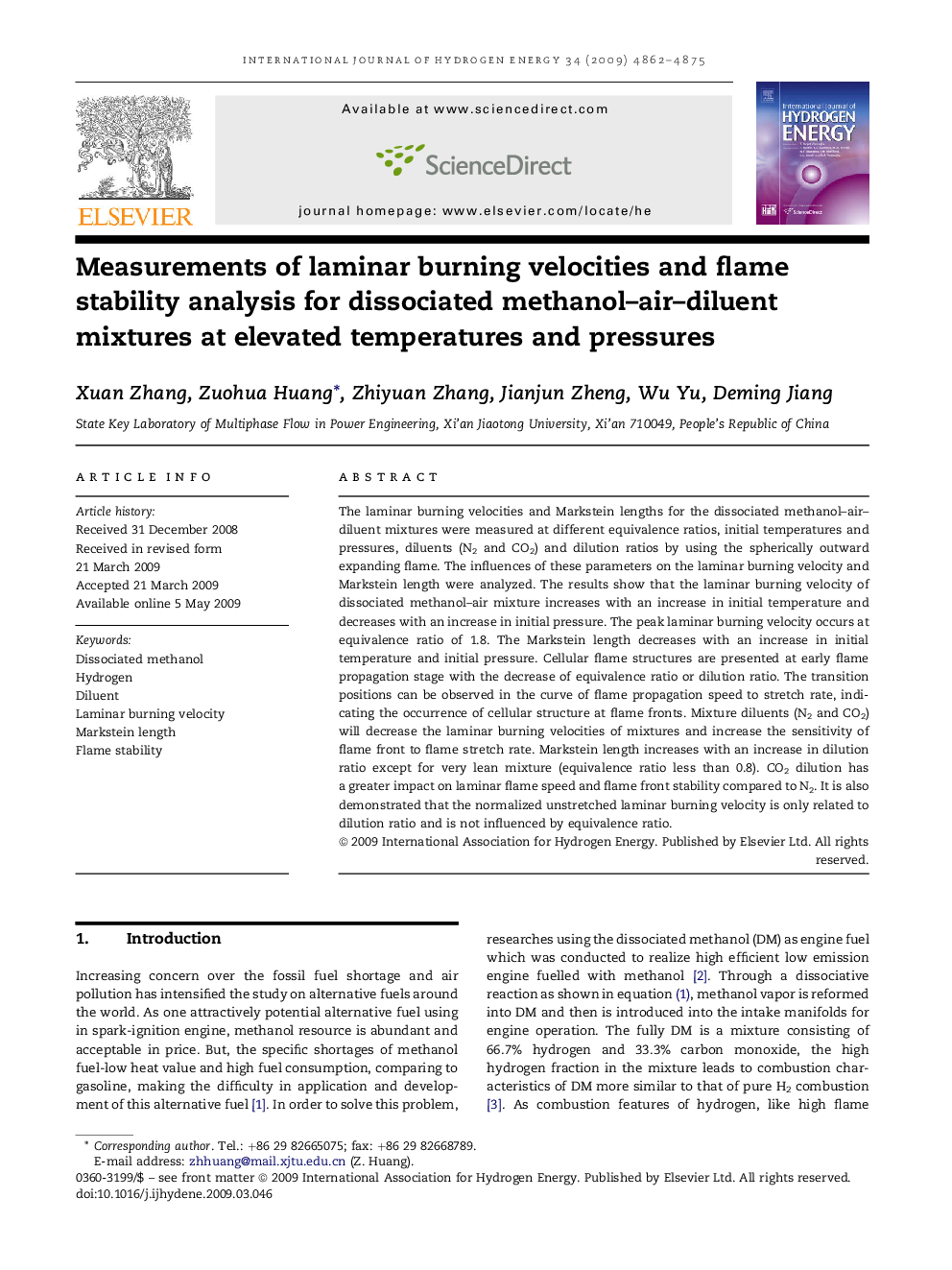| Article ID | Journal | Published Year | Pages | File Type |
|---|---|---|---|---|
| 1277870 | International Journal of Hydrogen Energy | 2009 | 14 Pages |
The laminar burning velocities and Markstein lengths for the dissociated methanol–air–diluent mixtures were measured at different equivalence ratios, initial temperatures and pressures, diluents (N2 and CO2) and dilution ratios by using the spherically outward expanding flame. The influences of these parameters on the laminar burning velocity and Markstein length were analyzed. The results show that the laminar burning velocity of dissociated methanol–air mixture increases with an increase in initial temperature and decreases with an increase in initial pressure. The peak laminar burning velocity occurs at equivalence ratio of 1.8. The Markstein length decreases with an increase in initial temperature and initial pressure. Cellular flame structures are presented at early flame propagation stage with the decrease of equivalence ratio or dilution ratio. The transition positions can be observed in the curve of flame propagation speed to stretch rate, indicating the occurrence of cellular structure at flame fronts. Mixture diluents (N2 and CO2) will decrease the laminar burning velocities of mixtures and increase the sensitivity of flame front to flame stretch rate. Markstein length increases with an increase in dilution ratio except for very lean mixture (equivalence ratio less than 0.8). CO2 dilution has a greater impact on laminar flame speed and flame front stability compared to N2. It is also demonstrated that the normalized unstretched laminar burning velocity is only related to dilution ratio and is not influenced by equivalence ratio.
